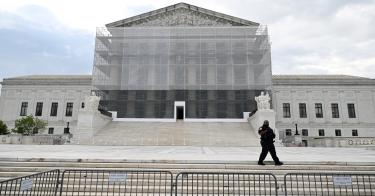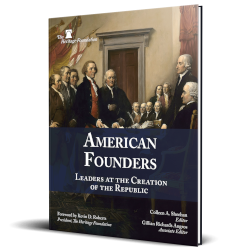The Supreme Court enjoys creating catch-22 scenarios. It has generated numerous instances. For example, it holds that the Free Exercise Clause forbids anti-religious discrimination, but also holds that the Establishment Clause sometimes requires anti-religious discrimination. It says that the Civil Rights Act prohibits race discrimination, but it created the disparate impact theory of liability, which sometimes requires race discrimination. And in the context of voting rights, it holds that the Equal Protection Clause forbids racial gerrymandering, but it also requires that Section 2 of the Voting Rights Act sometimes necessitates racial gerrymandering.
This last paradox landed Louisiana in the Supreme Court after 33 years of near-constant litigation over its congressional maps. Following the Supreme Court, the lower courts have batted the state around like a ping-pong ball, voiding the state’s congressional maps because they’re racially gerrymandered, and then voiding them again because they’re not racially gerrymandered.
Now, the state begs the Court for relief from this “impossible” situation, but the Court isn’t likely to help, and that’s partly the state’s own fault.
The case turns on the complicated relationship between Section 2 of the Voting Rights Act and the Equal Protection Clause of the Fourteenth Amendment.
>>> The Judicial Appointment Train Is Leaving the Station
As originally written in 1965, Section 2 prohibited intentional discrimination in voting because of race. Then, in 1982, Congress amended it to target disparate effects instead of discriminatory intent. It became what Voting Rights Act scholar Abigail Thernstrom called, “a disparate-impact test for discrimination.” After the ’82 amendment, the question in Section 2 cases became whether a minority group has had its voting power “diluted.”
The obvious question was: diluted compared to what? There must be some benchmark. The benchmark that people typically use when they want to balance outcomes across racial groups is proportionality to the population. In the context of racial gerrymandering, that would mean that a minority group must have roughly the same proportion of a state’s congressional seats as its proportion of the state’s population. But there’s a problem: Section 2 says, “nothing in this section establishes a right to have members of a protected class elected in numbers equal to their proportion in the population.”
The text was clear, but the law's text was not particularly important to the Burger-era Court. So, in Thornburg v. Gingles (1985), the Court decided, as Justice Sandra Day O’Connor explained in her concurrence, that the benchmark would indeed be “roughly proportional representation.” The Court didn’t explicitly state this conclusion because it had to pay lip service to Section 2, but the convoluted test it developed led nowhere but that conclusion.
But then came the Equal Protection Clause, stepping out from the shadows—as it always does when our enlightened justices start divvying us up by race—to prohibit race discrimination. And so was born the king of judicial catch-22s: States must racially gerrymander, but states cannot racially gerrymander.
Of course, the Court created balancing tests to chart a path through the paradox—for example, race can, indeed, be used somewhat, but it must not “predominate.” However, as with so many judicial balancing tests, these tipped whichever way a particular judge wanted them to. Thus, states like Louisiana seesawed with every change to their congressional maps.
Louisiana’s redistricting saga began in 1992 (the history of the litigation is recounted in Callais v. Landry) when the state created a map with two majority-black districts to maintain rough proportionality with the proportion of black Louisianans in the state population. Federal courts, however, invalidated that map under the Equal Protection Clause because the state relied too much on race to create those racial districts. The state tried again, creating a new map with two majority-black districts, and again the courts scrapped the map.
Then the state created a map with only one majority-black district, and the courts scrapped that one, too, holding that Section 2 required the state to have two majority-black districts. So, the state, once again, created a map with two majority-black districts. And once again, the courts scrapped the map because the Equal Protection Clause forbids racial gerrymandering.
Now, an exasperated Louisiana begs the Supreme Court to end the “endless litigation.” Louisiana “is tired,” writes its solicitor general, and it deserves clear guidance from the Court. The state doesn’t care how it wins this case—“on standing, the merits, or the recognition that racial-gerrymandering cases inherently present judicially unanswerable questions properly left to the political branches”—it just wants “the madness” to end.
Madness it is. And like so much madness created by the Supreme Court, it happened because some justices claimed the power to rewrite laws to fit their enlightened views about social policy, and later justices lack the courage or humility to put the law right again.
It was neither necessary nor inevitable that the Court should force racial proportionality on the states. As Justice Clarence Thomas argued in dissent in Allen v. Milligan, developing an alternative, neutral benchmark is at least conceptually possible. Thomas invited the majority (Chief Justice John Roberts, Justice Brett Kavanaugh, and the three liberals) to work with him to do so, but the majority “studiously avoided” reexamining the racial proportionality benchmark.
By using racial proportionality, Thomas argued, “we encourage a conception of politics as a struggle for power between competing racial factions,” if that is what Section 2 requires, then “it is unconstitutional.” Put simply: work with me to fix this, or I will argue for scrapping Section 2 entirely. The majority was not interested.
That is curious because the five-member majority was not secure. Justices Neil Gorsuch and Amy Coney Barrett joined Thomas’s threat, and Justice Samuel Alito joined him in his calls to rework the benchmark. Justice Kavanaugh, meanwhile, wrote a roadmap explaining how he could be pulled away from the majority, flipping it to Thomas.
Kavanaugh said that even if Section 2 required some amount of racial gerrymandering, it “cannot extend indefinitely into the future.” He did not, however, join the dissent on that basis because the state in that case didn’t make that argument. If that phrase—“cannot extend indefinitely into the future”—sounds familiar, that’s because Kavanaugh concurred in the Students for Fair Admissions v. Harvard in part because racial preferences in college admissions could exist for a time, “but not indefinitely into the future.”
>>> Trump’s 100 Days and the Legal War in Washington
Kavanaugh, in short, is comfortable with some racial preferences and gerrymanders provided they are time limited. But if a state argues that Section 2 requires perpetual racial gerrymanders, he is likely to switch sides and join Thomas.
That is a clear path to a victory for Louisiana in this case. Yet for reasons unknown, Louisiana didn’t take it. Instead, Louisiana spends most of its brief arguing that “race did not predominate” and that, even if it did, the state was justified because Section 2 requires racial gerrymandering.
The thing about catch-22s is that you can only get out of them if you break one of the two impossible premises that define them. Louisiana hasn't attempted to do that here. It seems so desperate to win this particular lawsuit that it has missed an opportunity to win all future ones by breaking the catch-22. A paragraph of its opening brief argues that the Court should hold that racial-gerrymandering cases present “judicially unanswerable questions properly left to the political branches.” But without further analysis, the Court is not likely to entertain the argument. The Chief and the three liberals will remain constant; the four dissenters will remain constant. Only Kavanaugh is persuadable, and although he told Louisiana exactly what he needed, the state hasn’t given it to him.
A shame because Louisiana is right that the status quo is “impossible,” and Thomas is right that racial gerrymandering has “divisive consequences.” One way or another, it should end. Unfortunately, Louisiana’s case isn’t likely to do it.
This piece originally appeared in the Civitas Institute




